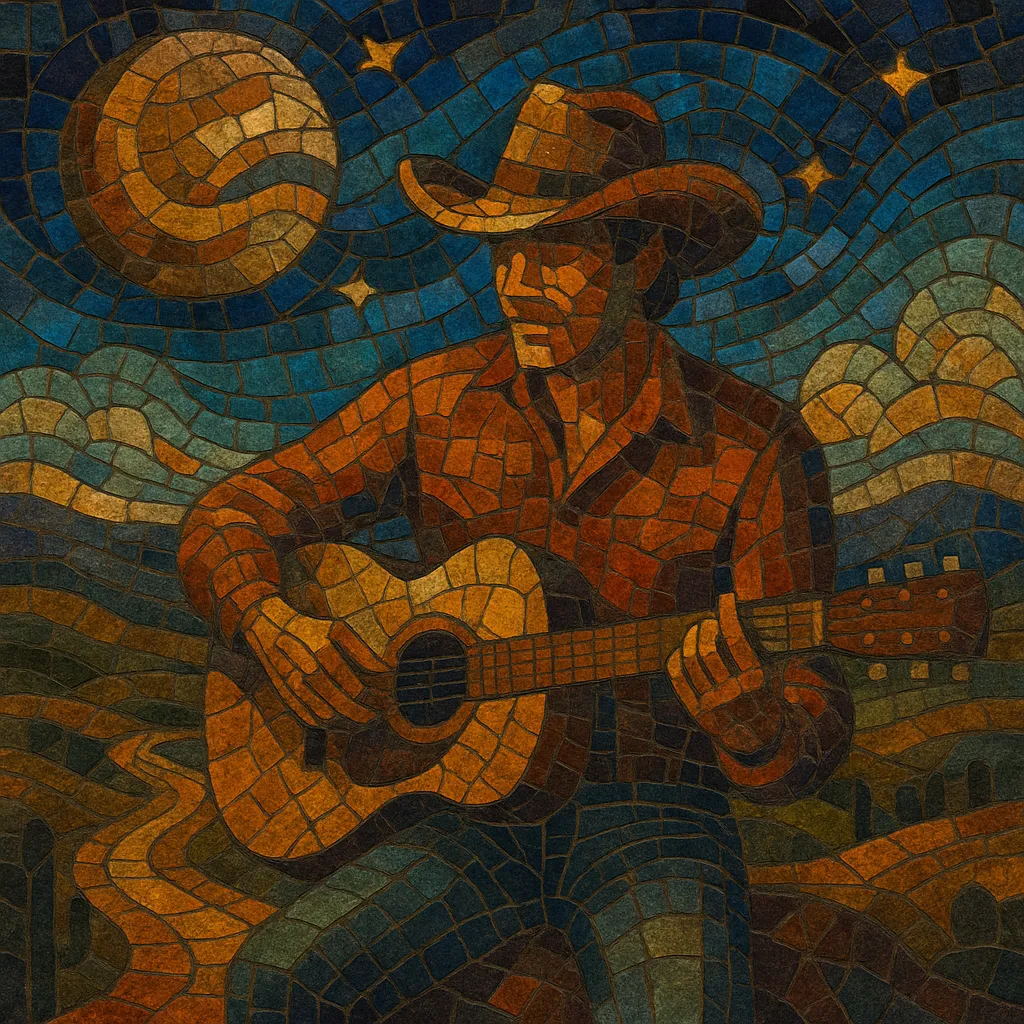
Cosmic country blends classic country songwriting with psychedelic textures, spacious production, and a subtly jam-oriented approach. It keeps the twang of pedal steel, Telecaster leads, and two-step rhythms, but bathes them in tape echo, plate reverb, and occasionally gentle synths or swirling organs.
The style’s “cosmic” quality comes from its dreamy, contemplative mood and lyrical focus on travel, transcendence, the open road, and big-sky spirituality. It feels warm and analog, favoring live-band interplay, extended instrumental passages, and harmonies that blur the line between honky-tonk earthiness and starry-eyed psychedelia.
Cosmic country coalesced in the early 1970s United States as artists pushed country rock toward a more expansive, psychedelic, and spiritual direction. Drawing on honky-tonk, gospel harmonies, and the exploratory vibe of psychedelic rock, early pioneers cast country storytelling in a hazy, reverberant glow, with pedal steel and organ floating over relaxed shuffles and waltzes.
Figures associated with The Byrds’ country phase, The Flying Burrito Brothers, and kindred West Coast scenes helped set the template: twang-forward instrumentation, harmony vocals, and open-ended bridges or codas that felt more like road-trip reveries than radio-tight endings. This approach solidified a mood—wistful, searching, and “big sky”—that distinguished it from straighter country rock.
While the broader industry cycled through outlaw and mainstream country phases, cosmic country’s DNA resurfaced in underground and indie scenes. By the late 1990s and 2000s, revivalist and neo-psych acts revisited the sound’s spaciousness and pedal-steel atmospheres. In the 2010s and 2020s, a new wave of artists explicitly embraced “cosmic country,” updating the palette with modern production while keeping analog warmth and extended instrumental interplay.
Cosmic country fed directly into Americana and alt-country aesthetics, encouraging song-first writing paired with adventurous textures. Its influence is audible wherever country meets dreamlike ambience, psychedelic shimmer, and jam-informed arrangements.

